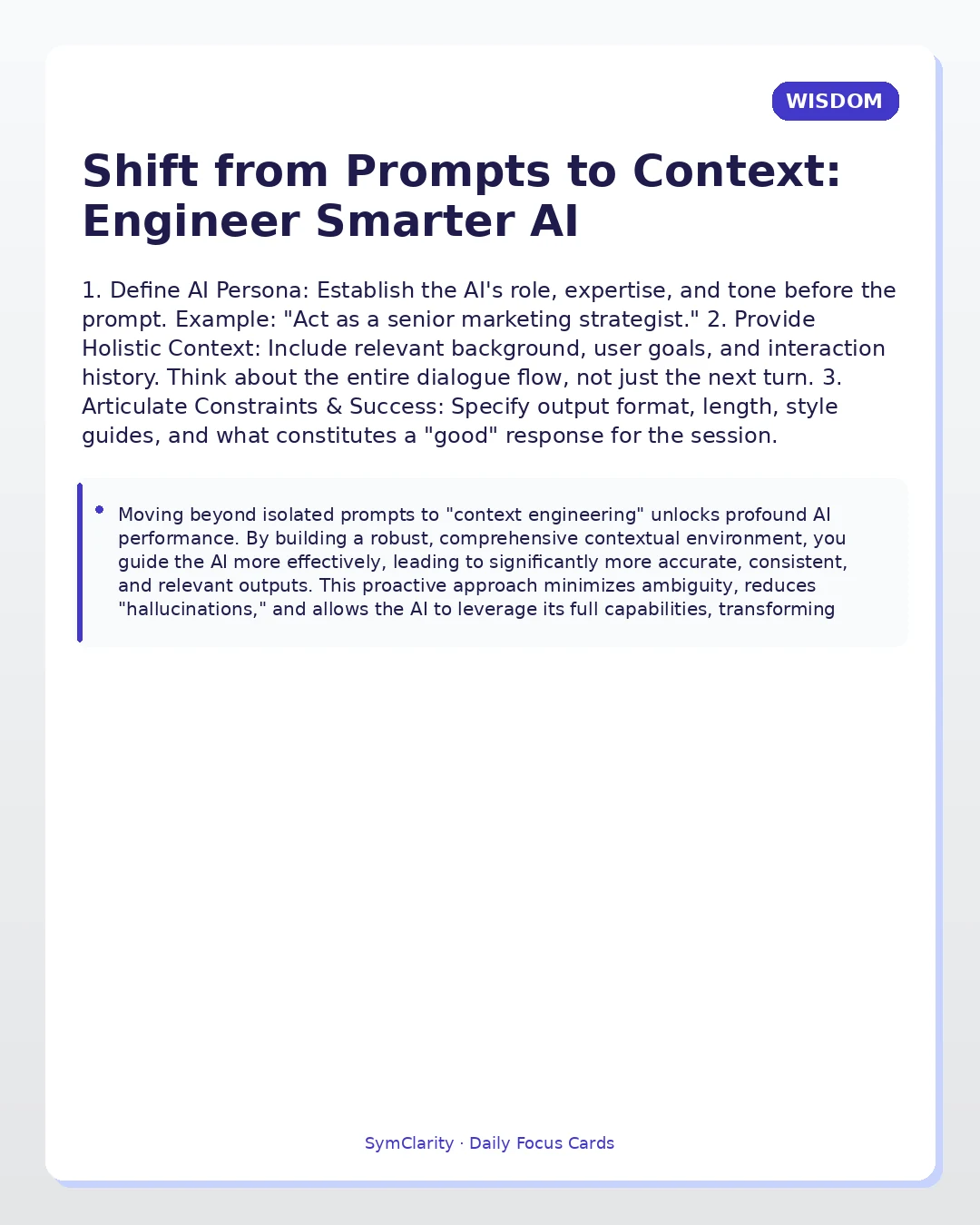Shift from Prompts to Context: Engineer Smarter AI
1. Define AI Persona: Establish the AI's role, expertise, and tone before the prompt. Example: "Act as a senior marketing strategist." 2. Provide Holistic Context: Include relevant background, user goals, and interaction history. Think about the entire dialogue flow, not just the next turn. 3. Articulate Constraints & Success: Specify output format, length, style guides, and what constitutes a "good" response for the session.
•
Moving beyond isolated prompts to "context engineering" unlocks profound AI performance. By building a robust, comprehensive contextual environment, you guide the AI more effectively, leading to significantly more accurate, consistent, and relevant outputs. This proactive approach minimizes ambiguity, reduces "hallucinations," and allows the AI to leverage its full capabilities, transforming interaction from reactive prompting to strategic collaboration. It's about designing the conditions for success, not just asking a question.
•
Mature from prompt engineering to context engineering provide 3 steps
